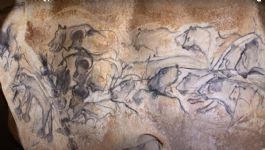This page records presentations from February 2023
To see 2022 presentations illustrated record select link presentations 2022
To see our full archive of presentations select link presentations to 2020
Recent Presentations
June2025
"9 reasons to paint a lighthouse and 9 reasons to paint a harbour" by Judy Appleby
Judy’s presentation to the club was an exploration of images inspired by
Lighthouses and Harbours, drawing upon the work of artists in various
parts of the country, including her own work and that of other club
members.
She was systematic in her analysis of the subject matter, listing nine
reasons for engaging with each. The form or architecture offered a
starting point for both, and the proximity of the sea provided challenges
for the artist in depicting constant movement.
The opportunity to go outdoors and paint en plein air was evident
throughout the presentation, whether the focus was upon wildlife,
notably birds, geology, the distinctive light (even the night!), or narratives
such as shipwrecks or everyday fishing.
Inevitably, when considering harbours, Judy drew attention to boats,
people and the ‘paraphenalia’ associated with the activity of the port
from anchors to nets.
Whilst Hokusai, Monet,Haig and Ravilious (below) all got a mention, it was refreshing
to hear the names of local artists such as Jim Edwards, Harry Bell and
Walter Holmes amongst those who have contributed to the ‘genre’. Near
neighbours in Scotland, such as John Bellany, and Barbara Rae ( a
personal favourite of Judy’s) added to the list.
Our region and the season offer plenty for the club members consirightright)dering
entering the competition, and Judy’s over-arching survey provided ample
inspiration.
Copy of (125) slides available if you email club.
May 2025
Composition
Damian Johnston's presentation on composition held his audience in rapt attention with his impressive use of animated visuals and clearly constructed reasoning. He drew a persuasive parallel between music and art composition and emphasised three stages in creating a piece. In the first, Damian explored the mathematical relationships in grids that form the structure of the design, particularly thirds and fourths, and showed by examples of a Tibetan mandala and a Shinto temple gateway that these are universal human responses, not an imposed condition of western culture. He then went on to show how tonal values develop the composition beyond the grid, moving from Japanese Notan of black and white, through compositions in black, white and three values of grey, to subtleties of colour relationships. In Damian’s final section he addressed the narrative, that is: deciding what you want the painting to say. He explained that in images with no human figure we, the viewers, create that narrative through our reaction to and memories of the content, giving the example of a stormy seascape. However, once the painting includes a person or people, the narrative becomes about them: why are they there? What are they doing? Where are they going? It was very thought provoking.


Grady Frederick Henrietta Rae
Damian has provided a list of artists featured in his presentation it is available as .PDF through email to The North of England Art Club
April 2025
Caravaggio
Cliff Lawrence gave members an expertly condensed account of the life, travels and work of Caravaggio 1571-1610 noting how the subject matter and style changed over time. Described as a person with ‘anger management issues’, he moved from Milan to Rome after wounding a police officer in 1592.
His street scenes, such as ‘Fortune teller’, and ‘Card Sharps’ (both 1594) provided narratives which became very popular and much copied. Using Minniti, as a model, he produced more ‘clever’ pictures, such as the ‘Lute Player’ which included depictions of flowers and fruit.
After 1600, his work became more religious, responding to the requirements of his patrons. He used a naturalistic style with distinctive lighting. Social issues such as defamation, jealousy over a woman, and eventually murder, led him to take refuge in Genoa, Naples and Malta. He acquired new patrons, and whilst hoping for a pardon from the Pope, he produced a number of depictions of severed heads, notably of Goliath (1607) and John the Baptist(1608) – with his own facial features. The latter work has large empty spaces, (¾ of the canvas ), signalling a new direction in composition.
Something of a ‘street-fighting man’, he died young, possibly the victim of a vendetta.
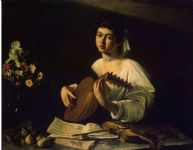
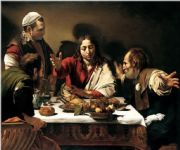
March 2025
Art/Colour/ Fashion by Gyuzel Gadelshina
Prior to the talk, some members were expressing their curiosity about the possible content,
but the audience was guided confidently on a journey identifying the points of contact
between the three elements in the title. Rooted in the book ‘Dior: The Art of Colour’, a limited
number of colours were examined, taking art works as a starting point for considering three
fashion designers who worked for Christian Dior, namely Tyen, Serge Lutens and Peter
Philips (no connection with Princess Anne!)
With each colour, White, Red, Yellow, Blue, Black and Gold, the fashion designs were
related to fine art. From Malevich to Turner, Leger to Klimt, examples were given of the
interplay between Art and Design, not just in clothing but also makeup. Some members
particularly enjoyed the illustrations, which were prominent before the domination of
photography. Altogether a stimulating and refreshing presentation!
February 2025
Jon Old began his talk by affirming that Pop Art originated in the UK (notably Richard Hamilton) before drawing attention to one of the American proponents of the style. Prior to becoming a full-time artist, James Rosenquist (1933-2017) spent time painting billboards, particularly those depicting human figures, such as film stars, often at great heights above the street. Jon demonstrated the impact of this previous employment upon his artwork. Whilst providing examples of Rosenquist’s ‘scrapbooks’ which included cut outs from magazines, often adverts for branded products ranging from cars to spaghetti, Jon drew attention to the large scale of the finished works. Images were combined, for example juxtaposing President Kennedy beside pieces of cake, leaving the viewer to interpret the meaning, as with Surrealism.
Rosenquist’s F111 (finished 1965- oil on canvas with Aluminium- in 4 parts 120’”x1032”)is probably his best known image; produced at the time of the Vietnam war, it depicts the fuselage of an American fighter plane predominantly in bright red.
Jon also showed how the work developed, to become more immersive as the large panels were installed, across all the walls, in gallery rooms, surrounding the viewer. Whilst adept at producing effects viewed from a distance, Rosenquist’s work could be approached in a more claustrophobic environment, experiencing close up the application of paint. The allusion to the American flag using streaky bacon was memorable, as was the ambiguity of tinned spaghetti!
According to Robert Hughes, Rosenquist’s contribution to Pop art was ‘The idea of painting as overload, as a yowling discharge of images in torrential sequence’, and Jon’s presentation conveyed some of that, within the small studio space.
November 2024
Our programme of talks for 2024 closed with Monica Shaw’s presentation on religious art. To give a structure to this vast subject, Monica concentrated on European Christian art that illustrates key stages in the Christian story, from the Annunciation to the Resurrection. Monica’s examples spanned from the 3rd century to modern works. It was fascinating to see how symbolic elements have been introduced over time and subsequently retained as essential key features. Could you have a nativity without an ox and an ass? Even Gaugin included them in his South Pacific nativity. Interesting too, to see the attitude of Mary to the Annunciation. In early examples, she shrinks away from the angel as if repelled or afraid, while in later works she appears to be confident and in control of the situation. The version by Otto Dix reverts to showing Mary as a frightened schoolgirl, although still of course wearing blue. A thought provoking study that raised some interesting discussion.
October 2024
This month's presentation by Keith Gray originated from reading the book 'Van Gogh's Ear' by Bernadette Murphy, which is somewhat like a detective story, digging into the myths and elaborations that have focussed on one distressing night in the artist's life. The talk concentrated on the fifteen months Vincent Van Gogh spent in Arles, during which he produced over 200 paintings, including these:-
September 2024
Artists against war
Alan Dordoy began our autumn talks with a sombre but absorbing presentation of art that is a protest against war. The subject was triggered by Alan’s visit to Stanley Spencer’s Memorial to the Unknown Soldier, a vast and moving work showing the horrors of World War 1, and the appalling “normalisation” of war as soldiers go about their everyday lives surrounded by death and dying comrades. Alan suggested that the genre began with Goya’s “The Third of May” showing Napoleonic riflemen executing (or murdering) unarmed Spanish rebels. There were many familiar famous works, such as Picasso’s “Guernica” and Paul Nash’s “The Menin Road”, but also unexpected pieces such as Barbara Candy’s “After an Air Raid -Direct Hit on a School”, L.S.Lowry’s studies of the blitz damage in Manchester, and a Picasso painting of US soldiers firing on unarmed naked Korean women and children. Alan decided to end his study at the Korean War in 1951 but pointed out that there has been plenty of war since then and that artistic protests are still necessary, an invitation to take part in the next club competition: War, what is it good for?

July 2024
Keith Gray presented a gallery of art works that could be related to the novel 'Girl Reading ' by Katie Ward. She took various paintings as the basis for her stories. Keith introduced further examples of this 'Genre', including Matisse and photographs of Marilyn Monroe.
questions and discussions touched on the early history of printed books, and the portrayal of women reading illustrating educated or studious women.
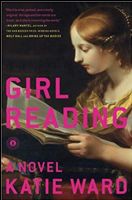
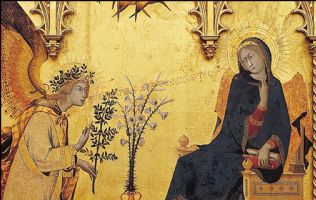
June 2024
Ian Hancock gave an excellent presentation on the history of Scottish landscape painting. As he explained, in the late 18th century the Scottish Highlands were remote and access was difficult. Paintings from this period are mainly topographical representations seeking to show the landscape as it is.
By the mid 19th century, the novels of Sir Walter Scott and Queen Victoria’s love of Scotland had made paintings of the Scottish landscape very popular throughout society. Many thousands of prints were sold. The works often romanticised the scenes and the Scottish weather.
With the development of the railways, and eventually improved roads, Scotland became more accessible to tourists and the art became gradually less representational. Ian took us on a fascinating journey from Peploe and Ferguson with their bold strokes capturing the feel of places, via the sometimes whimsical William Gillies and Joan Eardley’s vigorous portrayals of Catterline, to the more abstract challenges of Barbara Rae and Patricia Sadler.
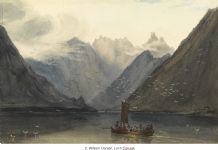

May 2024
Jon Old took members on a fascinating history tour from 1400AD to the present time, explaining the evolution of painting materials and techniques. The earliest works were tempera paintings on wooden panels, with under drawing on a white ground, then colour gradually built up in layers. Oil painting came to the fore around 1430 with Jan van Eyck. It was a laborious and labour intensive process with pigments ground by hand to the right consistency and then mixed with oil, usually linseed or walnut. Artists needed studios with several assistants and apprentices to prepare all the materials.
A hundred years later canvas on stretchers was replacing the wooden panels. Jon posited that this may have originated in Venice where damp would affect wooden panels and canvas would be readily available. This enabled artists to create much larger works as they could be taken off the stretcher and rolled for easy transportation.
By the c17th specialist artists were hiring themselves out, to fill in details such as background landscapes or ladies’ gowns, while the master artists would paint the portrait and then move on to the next work.
The c19th brought big changes with industrial developments such as new and cheaper chemical colours, and critically, the development of the metal ferrule to hold the bristles of the brushes that enabled artists to have flat brushes and wider brushes rather than being restricted to a round brush. That change, combined with the invention of metal tubes that would keep paints fluid and make them transportable, enabled artists to explore en plein air painting and experiment with bolder brush strokes. As Jon said, “without these inventions, the Impressionists would not exist.”
Jon concluded with an overview of modern painters being influenced by new materials such as acrylics, and even Jackson Pollock’s use of ordinary house paints.
Sur la Plage by Monet
April 2024
The April talk was by Ian Davison on artists who are best known for their illustrations. He showed examples of work by five artists: E H Shepard; Aubrey Beardsley; Mervin Peake; Paul Hogarth and Ralph Steadman. Ian introduced the background of each artist, explained their motivation and explored the diverse character of their works. He also included some amusing facts. Shepard, towards the end of his life, resented the fame of his Pooh drawings as he felt they distracted from his “proper” art. Beardsley wrote to his publisher from his death bed and implored him to destroy all of his erotic drawings, thankfully his publisher ignored him. Peake designed the logo for Pan books and was offered £10 flat fee or one farthing per book. On Graham Greene’s advice, he took the flat fee and missed out on a considerable income. Steadman accidentally left his drawing materials in a New York taxi and illustrated “The Kentucky Derby” with a Revlon make up sample kit.

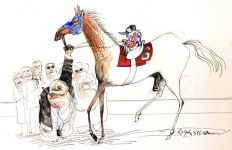
March 2024
Keith Gray gave a talk entitled ‘Doing the Laundry’ which was inspired by the purchase of a remaindered monograph written about a 1761 painting called ‘La Blanchisseuse’ by Jean Baptiste Greuze (pictured below)
From an initial description of the academic hierarchy which dominated European art in the 18th and 19th centuries, the presentation explored Genre Painting. The laundry was done in both public and private settings, and examples of each were shown, from many parts of the world. Club members were astonished at the number and range of images of people (almost always women) doing laundry work in a wide variety of settings
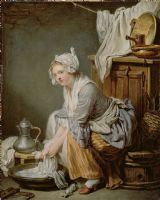
February 2024
Cliff Lawrence started the 2024 series of talks, and seventeen members braved unpleasant weather to attend. Cliff’s subject was the use of camera obscura in art. He began by explaining how the camera obscura works, with a pinhole creating an inverted image of the view on the back wall of a darkened space. Cliff explored the use of this device, and subsequent more sophisticated versions, by Canaletto, Vermeer and Joshua Reynolds. There were remarkable comparative images of Canaletto’s Venice paintings and his sketches of the canal side buildings, that Cliff concludes show evidence that Canaletto did use a camera obscura. The case of Vermeer is more contentious and has been examined extensively by several researchers. The conclusion appears to be that, if Vermeer did use the device, the paintings are still brilliant and maybe he was only secretive to prevent rivals from copying his technique. Joshua Reynolds possessed a camera obscura disguised as a large book when it was folded away. He never admitted using it and it’s possible that he did not use it for his society portraits. The discussion amongst members was mainly on the question: “is it cheating”? The general view was that it is not.
November 2023
Alison Sidney gave the final talk of our 2023 series: The Joy of Acrylics. Alison’s love of acrylics had a dark beginning. As a teenage girl living in Halifax at the time of the Yorkshire Ripper, the freedoms of Alison and her friends were severely restricted for three years, and they were mostly confined to home. After struggling with watercolours, Alison made a breakthrough when someone bought her a set of acrylics. The talk was illustrated with examples by Hockney, Lichtenstein, Roland, Barns-Graham and Bridget Riley, whose work was felt by several members to be disturbing. Alison ended with a money saving idea for a stay wet palette.
October 23
Judy Appleby and Ian Davison did a double act on the art of whisky. Judy talked about the artistic appeal of large and distinctive industrial forms in dramatic landscape settings, interspersed with Ian explaining how whisky is made. Judy also showed examples of new distilleries that have become a fashion trend employing good and imaginative architects. After reviewing the design aesthetic of whisky bottles and glasses, including The Macallan’s collection of bottles by Lalique, Judy showed the labels by Sir Quentin Blake to adorn the collection of 52 different whiskies representing all of the characters in Macbeth. The session ended with a blind tasting of Highland, Island and Speyside whiskies.
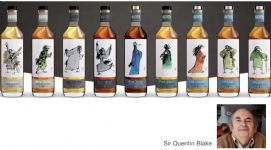
September 23
Twenty one members were in the studio to hear Wendy Ranadé’s talk on "Dance!". This was also an introduction to the next competition. Wendy began with the ballet dancers of Degas, the familiar paintings mainly of dancers at rest, but she also showed how Degas had sought to capture movement in his sketches, perhaps the greatest challenge for an artist. Moving through examples by Toulouse Lautrec, Matisse and Kandinsky, Wendy introduced us to the lovely drawings of Douglas Hamilton Fraser. The talk ended with examples of work by three of our members, Alasdair Sibbald, Alan Mason and Wendy herself, based on their visits to Dance City. Alasdair demonstrates astonishing ability by working only from life without any photographs. Alan and Wendy had used photography to good advantage in creating works that captured the vitality and movement of the dancers.
July 23
Ian Davison stood in for Kevin Paton who was unable to give his presentation. Ian gave us another chance to be fascinated by his entertaining presentation, first given in Feb.2017, on 'Art Forgers'.
Ian concentrated on ten artists who created work that was then passed off as a valuable original by a famous artist. In most cases, these forgers were very talented artists who found that the art market and gallery owners did not value their own original work. For some the act of forgery was an act of revenge on the art establishment that ignored them.
Others were definitely motivated by money. Of these there were examples of forgers who had been unmasked, served time in prison (commonly about four years), and come back into society with a reputation and able to command high prices for bespoke “forgeries” signed in their own name!
The strangest forger in this talk was Mark Landiss, a not very talented American artist, who disguises himself as a Jesuit priest and tries to donate his work to small museums and public galleries. He was eventually caught out but could not be prosecuted because he had never sold any of his work.
June 23: Sixteen members turned up in a very warm studio to hear Monica Shaw talk about the life and work of Marc Chagall. Born in a rural Russian Jewish community in 1887, Chagall lived to be 97, surviving two world wars, the destruction of his home village and its population, and personal tragedy, yet his paintings are full of optimism. Monica explained that the familiar Chagall image of a couple flying through the air represents Chagall and his first wife, Bella, rising above everyday problems and speeding towards a happy future. They are often accompanied by a rooster, a symbol of fertility, and other images in his complex compositions frequently reference his home village and its traditions. His early work was regarded as surreal but he did not consider himself a surrealist. He experimented with many techniques, notably engraving and lithography in his bible illustrations, sculpture, ceramics and stained glass, as well as stage set and costume design. His biographer Franz Meyer (‘Marc Chagall’, 1964) wrote: ‘Pablo Picasso stood for the triumph of the intellect, Chagall for the glory of the heart.’
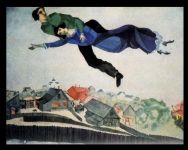
May23: Jon Old, formerly a conservator for the Laing Art Gallery and the Bowes Museum, treated members to a fascinating insight into the work of conservators and curators. He explained the challenges and risks involved in packaging, wrapping and transporting paintings, especially when the artist had not allowed enough time for the paint to dry! Then the problems for conservators in trying to make good any damage while liaising with sensitive artists. Jon particularly highlighted the difficulties of dealing with mixed media experiments of artists who like to push the boundaries, with amusing anecdotes from his personal experiences.
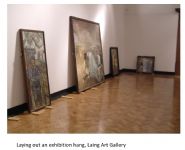
April 23 unfortunately Ian Davison was ill. However, with some home coaching Judy was able to make his presentation for him. "Danger! Men (and Women) at Work".
Two great favourites "The Floor Scrapers" by Caillebotte and "A Hind's Daughter" by Guthrie started the slide show with familiar images.
A brief history contrasting the portrayal of workers as the property of the landowner in c18th paintings, with the dramatic, atmospheric images by Wright of Ironworking of the Industrial Revolution.
Ian's research (with reference to Art UK website) brought the work of three artists c20th to our attention. Prunella Clough, Tony Evans and Vladimir Lebedev.
The importance of wartime in documentation of the activities, particularly of women, in the war effort led to some realistic images such as "The Munition Girls" by Stanhope Forbes showing women workers alongside men (for the first time). Other paintings showed women engaged in technical work on Hurricane aircraft, and aircraft repair. Stanley Spencer's "Shipbuilding on the Clyde" triptych brought a new understanding of the sheer effort and awkwardness of the dangerous work of the 'Riveters'.
'The Shipyards or the Pits' was the topic of the final section of Ian's talk. This illustrated the vast scale of shipbuilding contrasting with the frighteningly claustrophobic work of the miners. Of course the Pitmen Painters are well-known in the area for their record of life in the collieries. Lachlan Goudie's amazingly detailed pen and wash images of shipbuilding bring images of work into the c21st.
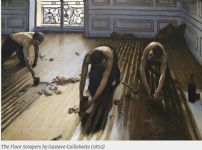
Hilary Franks spoke with passion about the work of her three chosen artists: Kathe Kollwitz, Paula Rego and Sylvia Sleigh.
The German artist, Kollwitz, was born in 1867 and saw the effects of poverty, hunger and war on the working classes. She produced series of prints, including the revolt of The Weavers and The Peasants War, that could be sold cheaply and distributed widely as a protest against the exploitation of the workers and particularly the harsh conditions imposed on women and children.
Hilary concentrated on Paula Rego’s depictions of abortion, “born from indignation that women are blamed for abortion”, showing that these women are strong and not victims. Her later series of line drawings based on the paintings were used to campaign for abortion rights in her native Portugal.
Sylvia Sleigh was part of a women’s art movement in New York and Hilary selected examples of her paintings of nude men, intended to counter the representation of nude women as objects. There was much lively discussion amongst the eighteen members who attended.
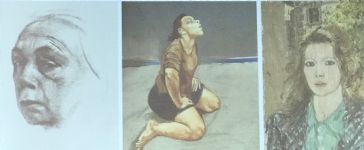
Cliff Lawrence opened the 2023 programme of talks with a fascinating exploration of Pre-historic Art, concentrating on examples from four cave systems in Northern Spain and Southern France. Cliff explained that there are examples in many parts of the world, as far apart as Indonesia and Central America (although none yet discovered in South America or the Middle East), and they share many characteristics. The audience was impressed by the realistic representation of animals, emphasised by Cliff’s illustrations of the real creatures alongside the paintings, with considerable accuracy in body structure, proportions, colouring and sense of movement. The example we show here was one of the oldest pieces, around 32,000 years old. There was a lively discussion as the art raised many questions. Not only why did they paint these works, but who taught the artists, what is the significance of the concentration on animals, why are there no similarly realistic representations of humans? Much food for thought.
